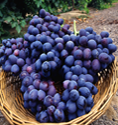Purine content in fish varies depending on the type and processing. Japanese researchers measured purine content in fish and seafood common in their diet. Depending on the purine level in 100g of edible portion of the food, and risk of gout, they classified them into six classes.
- Very low purine sources, <50mg: In this class are roes (eggs) of salmon and herring.
- Low purine sources, 50 - 100mg: Fish with this low purine level include Japanese eel, monkfish, red king crab, botan shrimp, squid organs and caviar.
- Moderate purine sources, 100 - 200mg: Common fish and seafood in this category include salmon, tuna, bastard halibut, mackerel, rainbouw trout, seabass, spiny lobster, herring, kuruma shrimp, octupus, oyster.
- High purine sources, 200 - 300mg: Of the common fish with high purine content is sardine. Other examples are oriental shrimp, krill, half-dried mackerel.
- Very high purine sources, >300mg: This level of purine in the fish and seafood is mostly as a result of drying, which increases the concentration of purines. This class of products need to be avoided or their consumption reduced. Examples are dried sardine, anchovies, and sakura shrimp.
Purine in Fish roe, Fish milt, and Seafoods
Table 2. Total purines and uric acid content in fish roe, fish milt, and seafoods.
| Fish type | Total purine (mg/100g) | Uric acid (mg/100g) | Category |
|---|---|---|---|
| Fish roe, fish milt | |||
| Caviar | 94.7 | 111.1 | low |
| Flying fish roe, in soy sauce, Tobiko | 91.5 | 107.1 | low |
| Flying fish roe, Tobiko | 67.8 | 81.8 | low |
| Herring roe, Kazunoko | 21.9 | 25.2 | very low |
| Pollock roe, marinated, Mentaiko | 159.3 | 186.0 | moderate |
| Pollock roe, Tarako | 120.7 | 141.2 | moderate |
| Salmon roe, Ikura | 3.7 | 4.4 | very low |
| Salmon roe, Sujiko | 15.7 | 18.5 | very low |
| Milt, striped pigfish | 305.5 | 351 | very high |
| Seafood (shellfish, mollusk) | |||
| Botan shrimp | 53.4 | 64.0 | low |
| Botan shrimp roe | 162.5 | 194.9 | moderate |
| Clam | 145.5 | 171.5 | moderate |
| Common orient clam | 104.5 | 122.7 | moderate |
| Crab, ovary | 152.2 | 175.4 | moderate |
| Firefly squid | 128.1 | 151.2 | moderate |
| Japanese flying squid | 186.8 | 223.6 | moderate |
| Japanese scallop | 76.5 | 94.2 | low |
| Kuruma shrimp | 195.3 | 235.3 | moderate |
| Octupus | 137.3 | 159.7 | moderate |
| Octupus, organs | 79.8 | 93.1 | low |
| Okiami (krill) | 225.7 | 267.3 | high |
| Oriental shrimp | 273.2 | 321.1 | high |
| Oyster | 184.5 | 213.5 | moderate |
| Red king crab | 99.6 | 119.4 | low |
| Sakura shrimp, dried | 749.1 | 907.0 | very high |
| Sea cucumber | 5.5 | 6.6 | very low |
| Sea urchin | 137.3 | 160.7 | moderate |
| Shiba shrimp | 144.2 | 176.5 | moderate |
| Squid, shredded, dried | 94.4 | 114.2 | low |
| Snow crab | 136.4 | 161.4 | moderate |
| Spear squid | 160.5 | 190.0 | moderate |
| Spiny lobster | 102.1 | 125.2 | moderate |
| Squid, organs | 59.6 | 68.8 | low |
Gout and diet related:
Purines and uric acid content in fresh and processed fish
Purines and uric acid content in beef, pork and chicken
Purines and uric acid content in vegetables, fruits, eggs, dairy products
References:
Kaneko K, Aoyagi Y, Fukuuchi T, Inazawa K, and Yamaoka N. Total Purine and Purine Base Content of Common Foodstuffs for Facilitating Nutritional Therapy for Gout and Hyperuricemia. Biol. Pharm. Bull 37(5), 709 - 721 (2014).



